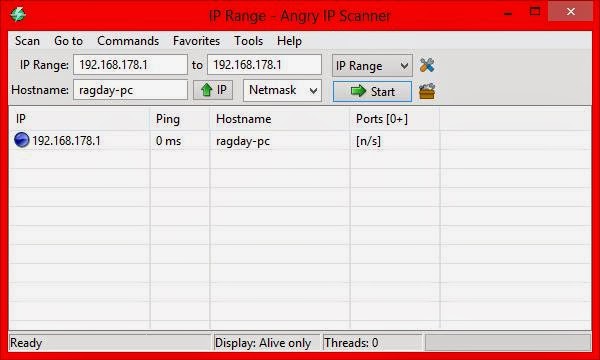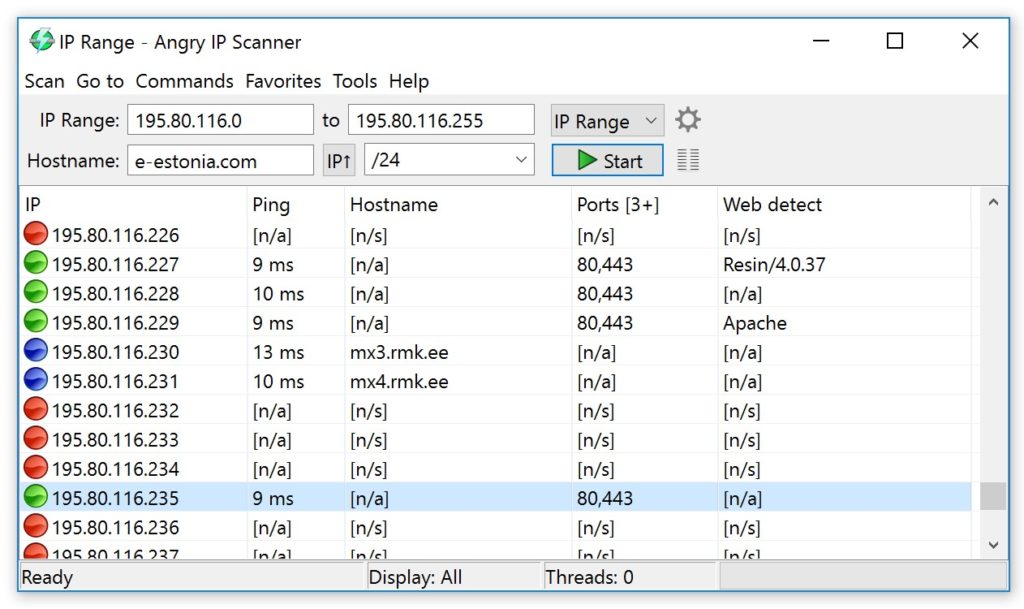


You need not scan a single IP with this – you can run a port scan on a whole range of IPs. The scan will run and any open ports will show up in the ports column as per the image below. So to scan from ports 10-100, you simply type in 10-100.Ĭlick OK, then click Start. Then select the ports tab, and in the text box at the bottom, enter the port range you wish to scan, as per the image below. If you want to scan ports within a range or just for a specific IP, Angry IP Scanner can do that too! Click on the little tool icon at the end of the first row as per the image below. IP’s that respond will show up with blue icons, and you’ll also see pingtime and hostname details. A list of results will show up as per below. To scan your subnet, simply change the last digit in the first IP sequence to 1, and the last digit of the second IP sequence to 255 and click Start. The IP entered in by default will be that of your own PC. Let’s assume you want to scan your local network to see what devices are connected. Unless you are running a version of Windows earlier than Vista SP2, you need not worry as any connection limitations have been removed.Īfter this initial window, there will a short list of steps that explain some basic terminology and how the program itself works.
Ip range angry ip scanner how to#
When you first open Angry IP Scanner, you will likely be asked if you want to find out how to get around the limitations of certain versions of Windows in order to increase scanning speed. Also, do note that you will need to have Java installed (for the Windows version, it should just run on the Mac, and Linux has some other dependencies). Do keep in mind that this guide is written for Windows, but all that is said here should apply to the other versions. The application is developed in java, so it is cross platforms compatible and works with Windows, Mac and Linux.
Ip range angry ip scanner download#
The first step is to download the appropriate version for your operating system from this page.


 0 kommentar(er)
0 kommentar(er)
